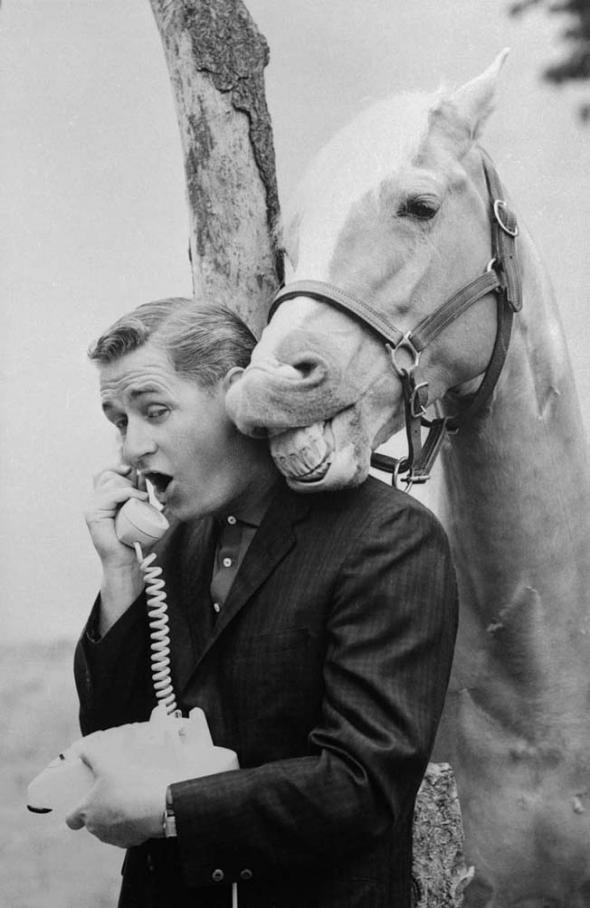George Orwell’s Animal Farm (1945) is synonymous with talking animals, but Orwell wasn’t the first to populate a novel with anti-establishmentarian, anthropomorphic animals. Walter R Brooks created the beloved Freddy the Pig and his friends on Bean Farm almost two decades earlier. Though Brooks’ Freddy books aren’t as overtly political as Orwell’s work, they do depict animals overcoming corrupt authority. Brooks had a rich, varied literary career that included not only the Freddy novels, but also numerous short stories, editorials, and literary reviews.
Brooks was born in Rome, New York on January 9, 1886. When he was four years old, his father passed away. His mother died eleven years later, and Walter was sent to Mohegan Lake Military Academy in Peekskill, New York. He stayed there from 1902 until 1904, where he moved in with his sister Elsie in Rochester. Elsie’s husband, Dr. William Perrin was a renowned homeopathic physician and a professor at the University of Rochester. Brooks took classes there for a few years, and in 1906 he went to New York City to study at the Homeopathic Medical College and Flower College. Brooks left New York City in 1908, returning to Rochester to marry Anne Shepherd.
 The year 1910 found Brooks in an entirely new field; he worked for Frank Du Noyer advertising agency in Utica. His tenure there proved short, however. In 1911, Brooks “retired.” It’s speculated that when his maiden aunts passed away, Brooks inherited a significant sum. He turned his attention to writing. Brooks was published for the first time in 1915, when his sonnet “Haunted” was printed in Century magazine. That same year, his short story “Harden’s Chance” appeared in Forum magazine. Two years later, Brooks joined the American Red Cross as a publicist. He continued writing short stories, however, and in 1934 began selling stories to Esquire. In total, Brooks published more than 100 short stories, 25 of which featured Ed the talking horse–the inspiration for the TV series “Mr. Ed.”
The year 1910 found Brooks in an entirely new field; he worked for Frank Du Noyer advertising agency in Utica. His tenure there proved short, however. In 1911, Brooks “retired.” It’s speculated that when his maiden aunts passed away, Brooks inherited a significant sum. He turned his attention to writing. Brooks was published for the first time in 1915, when his sonnet “Haunted” was printed in Century magazine. That same year, his short story “Harden’s Chance” appeared in Forum magazine. Two years later, Brooks joined the American Red Cross as a publicist. He continued writing short stories, however, and in 1934 began selling stories to Esquire. In total, Brooks published more than 100 short stories, 25 of which featured Ed the talking horse–the inspiration for the TV series “Mr. Ed.”
In 1927, Walter published the first Freddy book under the title To and Again (later, Freddy Goes to Florida). He would go on to write a total of 26 books featuring Freddy the Pig. Meanwhile, in 1928 Brooks embarked on a series of positions with various magazines. Until 1932, he was a columnist and book review editor for The Outlook and Independent. Through these positions, Brooks was among the first to discover Dashielle Hammett. Brooks went on to write for New Yorker, Fiction Parade, and Scribner’s Commentator.
 The Freddy books were by far Brooks’ most popular, and they sold quite well. Set on the Bean Farm in upstate New York, they included both human and animal characters–and the humans never seemed too surprised that the animals could talk. Freddy isn’t a likely hero; he’s quite lazy and manages to accomplish anything only because it’s easier to keep going once he’s gotten started. The novels’ villains frequently represent some form of the Establishment, and the novels’ conflicts generally appeal to children’s sense of fairness and equality.
The Freddy books were by far Brooks’ most popular, and they sold quite well. Set on the Bean Farm in upstate New York, they included both human and animal characters–and the humans never seemed too surprised that the animals could talk. Freddy isn’t a likely hero; he’s quite lazy and manages to accomplish anything only because it’s easier to keep going once he’s gotten started. The novels’ villains frequently represent some form of the Establishment, and the novels’ conflicts generally appeal to children’s sense of fairness and equality.
Critics have likened the Freddy books to AA Milne’s Winnie the Pooh books and Kenneth Grahame’s Wind in the Willows. Despite their mass appeal, however, the Freddy books began going out of print in the 1960’s. Thanks to the urging of Friends of Freddy, Alfred A Knopf issued new paperback editions of eight titles in 1986 and 1987. They included an introduction by Brooks’ biographer, Michael Cart, and gleaned substantial praise from reviewers. Now the books are available from the Overlook Press.
Although Brooks’ works are no longer in the spotlight, they’re still much loved among a devoted circle of fans. Many collectors also love the Freddy series, not only because the books evoke their childhood, but also because the books have wonderfully attractive dust jackets and illustrations.


